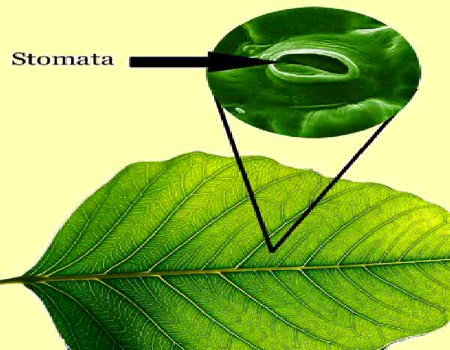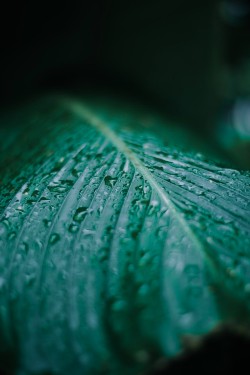Transpiration in Plants – The Best Learning Guide (2021)
Compiled by Stanley Udegbunam || Dec 10, 2020
AFRILCATE
WHAT IS TRANSPIRATION?
Transpiration is a process that involves the loss of water vapor from plant tissues.
It can be referred to as the evaporation of water from plant tissue mainly through the stomates of leaves.
Transpiration occurs mainly at the surfaces of leaves when their stomata are open.
The opening of the stomata creates a pathway for the passage of carbon dioxide and oxygen during photosynthesis.
Since stomatal openings are necessary for oxygen escape and carbon dioxide intake, transpiration is generally considered an unavoidable natural phenomenon.
Although transpiration occurs majorly through the stomates of leaves, plants also transpire through the cuticular layer and plant lenticels.
TYPES OF TRANSPIRATION
There are three different types of transpiration:
- Stomatal Transpiration
- Cuticular Transpiration
- Lenticular Transpiration
What is Stomatal Transpiration?
Stomatal transpiration is the direct evaporation of water through the stomata of the plants.
Stomata are small pores present in leaves. They are responsible for the transpiration of the majority of the water from the plant. Transpiration by crops is regulated by stomatal opening and closing.
The water near the surface of leaves changes into vapor and evaporates whenever the stomata are open. Water loss and CO2 uptake are reduced with the closing of the stomata.
The closing and opening of stomata can be affected by different factors like the degree of illumination, environmental temperature and water level of the plant.
Darkness and internal water deficit tend to close stomates and this decreases the transpiration rate.
On the other hand, illumination, ample water supply, and optimum temperature open stomates thereby increasing transpiration rate.
This opening and closing action in response to various environmental stimuli is governed by two guard cells that are present in plant stomates. They account for about 90% – 95% of water loss from the plants.
Darkness and internal water deficit tend to close stomates and this decreases the transpiration rate.
On the other hand, illumination, ample water supply, and optimum temperature open stomates thereby increasing transpiration rate.
This opening and closing action in response to various environmental stimuli is governed by two guard cells that are present in plant stomates.
They account for about 90% – 95% of water loss from the plants.

What is Cuticular Transpiration?
Cuticular transpiration is the evaporation of water from the cuticle of the plants.

The cuticle is a waxy covering on the surface leaves and stems of the plant.
Transpiration through plant cuticles dominates over stomatal transpiration in darkness and under extremely dry conditions due to stomatal closure.
Cuticular transpiration is also paramount in plants having thin cuticles and lesser in dessert plant (xerophytes) because of their thick cuticles.
Cuticular transpiration accounts for only about 5% -10% of the total water loss from leaves.
What is Lenticular Transpiration?
This is the evaporation of water vapor from plants through the lenticels.
The lenticels are tiny openings in the bark of branches, wooden stems, twigs and fruits.
Like cuticular transpiration, transpiration through the lenticels is also significant in plants subjected to very dry conditions as a result of stomatal closure.
A major difference between Lenticular transpiration and cuticular transpiration is that:
Lenticular transpiration occurs both day and night because plant lenticels have no mechanism of closure, unlike cuticular transpiration that only takes place at night. The opening of the cuticles is triggered by darkness.
However, lenticular transpiration is responsible for the shriveled appearance of leftover fruits.
A minimal amount of water is lost through lenticels when compared to water loss from the other transpiration types.
Lenticular transpiration accounts for only 0.1% – 3% of plant’s total water loss.

FACTORS AFFECTING TRANSPIRATION
Transpiration rate largely depends on two major factors:
- Environmental factors
- Plant factors
Environmental factors affecting transpsiration rate include:
- Light – stomata close in the dark and opens at the daytime. This makes illumination a major contributing factor.
- Relative humidity – this is the percentage ratio of the amount of water vapor in the air to that required for saturation at a given temperature. The more the relative humidity, the lesser the transpiration rate.
- Temperature – high temperature opens the stomata even in darkness and lowers the relative humidity. Therefore, temperature increases the rate of transpiration.
- Atmospheric pressure – a low atmospheric pressure will result in a high transpiration rate.
- Wind speed – If the wind speed is high, saturated air around the leaves is removed and the transpiration rate increases.
Plant factors affecting the rate of transpiration include:
- The leaf orientation
- The number and distribution of stomates on the leaf
- Water status of the plant
- Structural Peculiarities of the leaf
ASCENT OF SAP
This is the upward movement of water and minerals from the root to the top of the plant.
When water evaporates from a plant, a pull is created from the roots through the xylem vessels, and water moves back to the leaves.
This suction force between the root and the ground is known as the transpiration pull.
The ascent of sap depends on the following properties of water:
- Cohesion – This is the mutual attraction between water attraction.
- Adhesion – The attraction of water molecules to the surface of the tracheary elements of xylem.
- Surface tension – water molecules are more attracted to each other in the liquid phase than in the gas phase causing them to behave like a stretched membrane.
IMPORTANCE OF TRANSPIRATION
The importance of transpiration includes:
- Cooling: The cooling effect of a tree is due to the evaporation of water from its leaves.
- Movement of Minerals: Transpiration helps in the conduction of water and minerals to different parts of the plants.
- Photosynthesis: It provides the water needed for food manufactured by photosynthesis in the leaves.
- Cell turgidity: The cells in a plant absorb water via osmosis and swell up. This results in a build-up of pressure called turgor pressure and the cells are said to be turgid.
- Growth: Optimum transpiration helps in the proper growth of the plants.
FREQUENTLY ASKED QUESTIONS ON TRANSPIRATION
I have gathered some common questions and queries on transpiration and also provided the best possible answers to give you a better understanding of this topic.
Without further ado, let’s get started.
1. What is transpiration rate?
This is the rate at which plants absorb water through the roots and then give off water vapor through pores in their leaves.
2. What are the types of transpiration?
The different type of transpiration are:
- Stomatal transpiration
- Cuticular transpiration
- Lenticel transpiration
3. What is Stomata transpiration?
This is the loss of water vapor through the stomata of the plant.
4. What is cuticular transpiration?
This is the loss of water vapor from the cuticles of the plant.
5. What is Lenticel transpiration?
This is the loss of water vapor through the lenticels.
6. Transpiration occurs mainly through?
Through the stomata. Stomata are small pores present in leaves. Stomatal transpiration accounts for 90%-95% of water loss in plants.
7. How does light affect transpiration?
Plant stomates contain two guard cell which controls the opening and closing of the stomates.
Illumination triggers these cells and causes the opening of the stomates. Hence stomatal transpiration is dominant during daytime
8. What is the importance of transpiration to plants?
Transpiration cools the surface of leaves, aids the movement of minerals, makes the cells rigid, provides water for photosynthesis and its required for the optimum growth of the plant.
DO YOU KNOW?
Excessive transpiration can be extremely injurious to a plant.
When water loss exceeds water intake, it can retard the plant’s growth and ultimately lead to death by dehydration.
The collective sum of evaporation from the land surface plus the transpiration from plants is called evapotranspiration.
DO YOU KNOW?
Excessive transpiration can be extremely injurious to a plant.
When water loss exceeds water intake, it can retard the plant’s growth and ultimately lead to death by dehydration.
The collective sum of evaporation from the land surface plus the transpiration from plants is called evapotranspiration.

